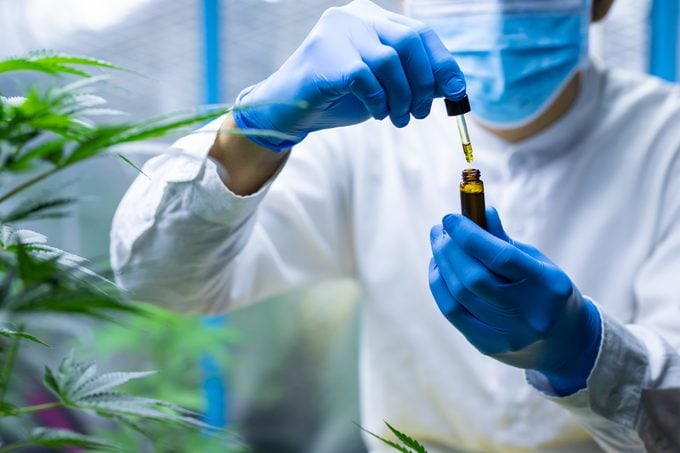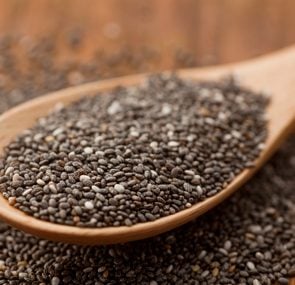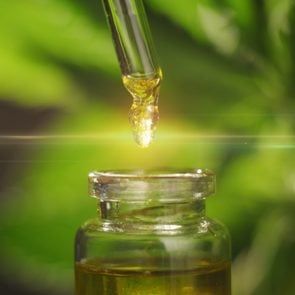What Is Hemp? What Experts Need You to Know
Updated: Jun. 21, 2021
Hemp has a buzz, but what is it that makes the plant so valuable? One clear reason is its CBD content, but that's not all...

Hemp is hot. This relative of the marijuana plant contains CBD (cannabidiol) and acres of hemp are now being grown in the United States.
In 2013, there were zero acres of hemp in the U.S. and now there are around 150,000, according to the U.S. Department of Agriculture (USDA). This crop’s exponential rise in popularity is due to the treasure trove of potentially healthful and helpful substances that can be extracted from its stalks, seeds, leaves, and roots, including the supplement CBD, as well as changes in how hemp is regulated by the federal government.
You can find hemp in clothing, textiles, diapers, handbags, paper, ropes, carpeting, building materials, soaps, shampoos, and other personal care items. It’s also found in foods such as hemp seed oil, hemp hearts or hemp seeds, hemp protein powder, hemp milk, and essential fatty acid food supplements. (Learn the differences in hemp hearts vs. hemp seeds.)
But what is hemp and why does it have so many uses?
Hemp vs. marijuana
Like marijuana, hemp is a cannabis plant known as Cannabis sativa. The main difference between marijuana and hemp is how much THC (delta-9 tetrahydrocannabinol) it contains. THC is responsible for marijuana’s mind-altering effects.
Marijuana contains much more THC than hemp, while hemp boasts more CBD (and a touch of CBG, too). Put another way: Hemp can’t get you high.
“Marijuana has greater than .3 percent of THC, whereas industrial hemp has less than .3 percent,” explains hemp researcher Haleigh Ortmeier-Clarke, graduate research assistant in the department of agronomy, University of Wisconsin-Madison. (Agronomy is the study of soil and crop production.) To put that in context, the average amount of THC in marijuana is around 12 percent (40 times as strong as hemp); some strains are 20 percent or more THC (67 times stronger than hemp).
“Chemically CBD is the kissing cousin of THC,” says Kent Vrana, PhD, chair of the department of pharmacology at Penn State College of Medicine. “They have identical chemical formulas (21 carbon atoms, 30 hydrogen atoms, and two oxygen atoms), but there is one bond broken in the chemical structure that is responsible for why THC is mind-altering and CBD is not.” (Here’s more on the differences between CBD and THC.)
How is hemp used?
Hemp came bursting back into the limelight when the 2018 Farm Bill removed hemp and its derivatives with low THC from the Controlled Substances Act (CSA), which is where THC currently remains, says Vrana. “Until that time it was classified as a schedule 1 drug which made it hard to study and illegal to produce federally.” It was reintroduced through state pilot programs by the 2014 Farm Bill, but commercial production was made possible by the 2018 bill.
Historically industrial hemp has been grown for fiber, not CBD, Ortmeier-Clarke says.
Found in the stalk of the plant, hemp’s fiber is considered green and eco-friendly. It falls into two categories. “The outer, longer fiber is called bast fiber and is used in textiles, rope, and paper,” she says. “The inner fibers are called core/hurd fibers and are used in building materials or plastics.” Hemp-based products can be recycled, reused, and are biodegradable, she notes.
Hemp seeds
The plant delivers what some experts consider super seeds. They are an excellent source of protein and omega-3 and omega-6 fatty acids. They also contain phytosterols or plant-based compounds that help lower cholesterol levels, says Dana Greene, a registered dietitian from Brookline, Massachusetts.”You can sprinkle the seeds on cereal, yogurt, or salads and even bake with them for a nutritional boost.”
Hemp oil is derived from these seeds by cleaning the seeds and then cold pressing them. “This oil can be used in cooking and cosmetics and shampoo,” she says. “Instead of mixing CBD with olive oil or other carrier oils, you could use oil from hemp grain as well.” The same nutrients that make it healthy to eat can also make it healthy for skin and hair, Greene adds. (Don’t miss the key differences between CBD oil vs. hemp oil.)

The primary source of CBD
Extracted from hemp’s leaves and flower, CBD is now driving the boom in hemp demand, Ortmeier-Clarke says.
CBD is touted as a panacea for a long list of conditions and ailments including anxiety, depression, joint pain, skin woes, tummy troubles, sleep, and more. Researchers are investigating CBD for many health conditions. Some of the strongest evidence seems to be for treating some of the symptoms of childhood epilepsy.
The FDA is currently deciding how best to regulate CBD oil, and that’s the biggest issue at hand, says Vrana. “You can buy CBD over the counter and over the web, but it’s totally unregulated,” he says. “It’s being promoted as the be-all and end-all and there is precious little data backing up any of the claims.”
Buyer beware
Products may not contain what is listed on the label since there is no watchdog at the moment, he says. CBD may also interfere with heart medications, antibiotics, and other drugs, he says. This is why you should talk to your doctor before you start taking supplements. It’s also risky to take unproven remedies such as CBD in lieu of treatments that are known to be effective.
There’s another concern too. CBD can’t get you high, but it could cause you to fail a drug test due to trace amounts of THC, he says.
Unless and until the FDA starts regulating CBD products, it’s user beware, Vrana stresses. Check information such as third party testing, if possible, to find out more information about the product you’re trying.



















